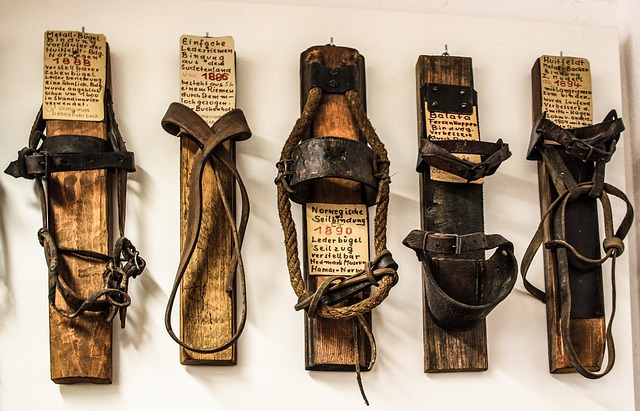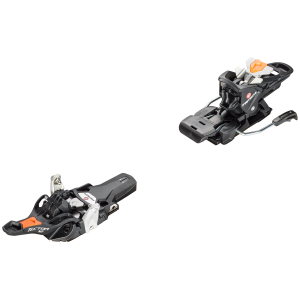
The Best Alpine Touring Bindings in 2019: Part 1 – 50/50 Bindings
Although there aren’t any game-changers like the Salomon/Atomic Shift this season, we’re still in what might be the best era ever in terms of choices for touring bindings. It’s a bit overwhelming, but we’ll try and narrow it down based on the type of skiing you do and what you need in a binding.
This is the first of a 3 part series comparing the best bindings for backcountry skiing. Part 2 is about the best tech bindings for backcountry skiing and Part 3 will be up shortly and will take a look at the best frame touring bindings.
We’re going to keep this a bit simpler than last year, but be sure to check out our 2018 Alpine Touring Binding Guide for info on many other bindings that aren’t listed here. Keep reading to find out more about the best bindings for alpine touring in 2019.
Best Touring Binding for 50/50 Resort/Touring
Many of us that backcountry ski also spend a fair bit of time skiing resorts. Especially when it’s dumping snow and you want to get as many laps in as possible…chairlifts are great for that. Having skis and bindings that work for both touring and resort skiing keeps things simple and can save some money compared to buying 2 (or more…) dedicated setups.
You will compromise a bit on weight with a 50/50 binding (these bindings are heavier than a true tech binding), but in recent years the downhill performance has come a long way. These bindings aren’t quite as good as a full-on alpine binding, but they’re close. Close enough that most skiers won’t notice a difference.
There are 3 excellent options in this category (and a fourth that I’ll touch on briefly). I’ll go through each of their pros and cons so you’ll have more info to make an informed choice of which will work best for you.
Fritschi Vipec Evo

Stats
MSRP: US$599
DIN Range: 5-12
Weight (with brakes): 515 grams (1 lb 2 oz) per binding, 1 kg (2 lbs 3 oz) per pair
Risers: 2, 9, 13 degrees
Elasticity (toe): 13 mm
Elasticity (heel): 2 mm
Forward Elasticity*: Yes
Boot Compatibility: Tech
*compensation for ski flex
Buy Now: Backcountry.com, evo.com, REI.com, Black Diamond, Amazon
Summary
Lighter than the other two recommendations in this category, the Vipec Evo sits right in the middle between a true tech binding and a heavyweight frame binding. In a good way. By all reports it tours quite well and is one of the easier bindings to use. The brakes stow away well, the ski/walk lever is confidence inspiring, and 3 riser levels make short work of skin tracks, steep and mellow alike.
Although they are mostly made of plastic (to save weight), the Vipec Evo still skis quite well, especially compared to a tech binding like the Dynafit Radical or G3 Ion. There is a bit of elasticity in the toe to smooth out the ride and lateral toe release gives a little more confidence that they’ll release when they should. Despite all the plastic there have been few complaints about durability.
Verdict
The Vipec Evo is suited for smoother skiers that aren’t on the heavy end of the spectrum. They aren’t as beefy as the next 2 in the list. If you’re a really aggressive skier, hucking huge cliffs or if you tend to run a high din because of your weight, check out the 2 bindings listed below. But if you’re relatively light with a smooth style, the Vipec Evo would be a great 50/50 binding for you.
Salomon S/Lab Shift MNC / Atomic Shift MNC

Stats
MSRP: US$599
DIN Range: 6-13
Weight (with brakes): 885 grams (1 lb 15 oz) per binding, 1.8 kg (3 lbs 14 oz) per pair
Risers: 2, 10 degrees
Elasticity (toe): 47 mm
Elasticity (heel): 9 mm
Forward Elasticity*: n/a
Boot Compatibility**: Alpine, Touring, WTR, Gripwalk
*compensation for ski flex
**touring mode only supports tech toes
Buy Now: Backcountry.com, evo.com, REI.com, Amazon
Summary
There was so much hype around this binding before it was released last season it was hard to believe. What’s harder to believe is that it has almost fully lived up to the hype. Salomon has cleverly combined a tech toe for touring with an alpine-style heel and toe for the down. Wings fold out of the way for touring and back in to lock your toe in place when you’re ready to descend. The big advantage is that you get huge elasticity in the toe, so it feels much more like an alpine binding on the descent.
Check out this video for a quick primer on how it works:
The Shift is heavier than the Vipec Evo, but is a little heavier duty (read: tougher). It’s still way lighter than an alpine binding. Heavier and/or more aggressive skiers should look at the Shift (or the Tecton below) as it’s more likely to hold up under pressure than the Vipec Evo. Note that, like the Vipec Evo and Tecton, you need a tech toe to tour in these bindings. Any boot will work for the descent, so you can rip up the resort in your alpine boots.
One minor downside of the Shift is that it only has 1 riser height (along with the ~2 degree ‘flat’ mode). If you’re the kind of person that is always flipping between low and high risers, having only one riser could be annoying. Steep skin tracks will also be challenging with only one riser.
Verdict
Cody Townsend wannabes, look no further. If you think you’re the fastest skier on the mountain and need a 50/50 duty binding, the Salomon S/Lab Shift MNC should be given a close look. Are you doing more touring than resort skiing? I would look at the Tecton. If you spend more time at the resort then in the backcountry, the Shift is likely a better choice.
Fritschi Tecton

Stats
MSRP: US$650
DIN Range: 5-12
Weight (with brakes): 680 grams (1 lb 8 oz) per binding, 1.4 kg (3 lbs 0 oz) per pair
Risers: 2, 9, 13 degrees
Elasticity (toe): 13 mm
Elasticity (heel): 9 mm
Forward Elasticity*: Yes
Boot Compatibility: Tech
*compensation for ski flex
Buy Now: Backcountry.com, evo.com, REI.com, Black Diamond
Summary
Although there wasn’t as much hype around the Tecton as the Shift, I think there should have been. It’s quite a package. It has the same toe as the Vipec Evo which is fairly easy to step into, and has lateral elasticity to keep the ride smooth. This tech toe also has lateral release, which a really good thing for your knees and something that no other tech binding has (aside from the Vipec Evo of course).
The heel is more like a traditional alpine heel than a tech binding heel. It doesn’t hold your boot by the pins, but clamps down alpine style. In touring mode it slides back out of the way (Kingpin Style) and has 2 risers attached to the front.
The Tecton is a bit lighter than the Shift or Kingpin and gives up a bit of performance going downhill to the Shift, which has a more alpine style toe. That said, the Tecton’s power transfer has been widely praised and as a 50/50 binding it’s near the top of the pack.
Verdict
Like the Salomon Shift, the Tecton is aiming at faster, heavier skiers than the Vipec Evo. Slightly less burly than the Shift, but lighter and with 2 risers, this would be an excellent 50/50 binding for someone who is sliiightly more touring focused than resort.
Honorable Mention: Marker Kingpin

Stats
MSRP: US$649
DIN Range: 6-13
Weight (with brakes): 775 grams (1 lb 11 oz) per binding, 1.75 kg (3 lbs 7 oz) per pair
Risers: 0, 7, 13 degrees
Elasticity (toe): 0 mm
Elasticity (heel): 16 mm
Forward Elasticity*: n/a
Boot Compatibility: Tech
*compensation for ski flex
Buy Now: Backcountry.com, evo.com, REI.com, Amazon
Summary
Since the release of the Shift and the Tecton, the Kingpin has found itself in an interesting spot. They are slightly lighter than the Shift, but they don’t perform as well as the Shift going downhill due to the lack of elasticity in the toe. Lacking lateral release in the toe makes it less safe than the Tecton. It also doesn’t tour as well as the Tecton (it tours okay, but it’s heavier).
Combine that info with the recall issues Marker has had with this binding and it’s hard to give this a solid recommendation. But if you find a good deal on them, they’re still a solid choice. I know a few people that ride them and have nothing but good things to say.
It’s worth mentioning that there is a ‘new’ version of the Kingpin coming out this year: the Kingpin M-Werks. This is a slightly lighter version of the Kingpin using the Alpinist toe and carbon fiber in the heel to reduce weight. It looks interesting on paper, and could ski a bit better than the current Kingpin but until we see some real life testing results, I would hold off on this binding.
Closing Thoughts
That’s the end of Part 1 of our Best Bindings for Alpine Touring in 2019 guide. Stay tuned for Part 2 – Tech Bindings and leave any comments or questions below.
2 thoughts on “The Best Alpine Touring Bindings in 2019: Part 1 – 50/50 Bindings”
Bro, how does the Dynafit Rotation not even make this list. I’ve been on that bindings for the last 3 season and have zero complaints. It releases when it’s supposed to and feels solid on all snow conditions, groomers, chop, mash potatoes, pow. There isn’t a better 50/50 in my mind.
Great to hear you’ve been liking the Dynafit Rotation! Great binding, and don’t worry, it will show up in Part 2 – tech bindings. The Rotation (and the G3 Ion) are kind of in between a 50/50 and more touring-oriented binding so I decided to include them in the ‘tech binding’ section.